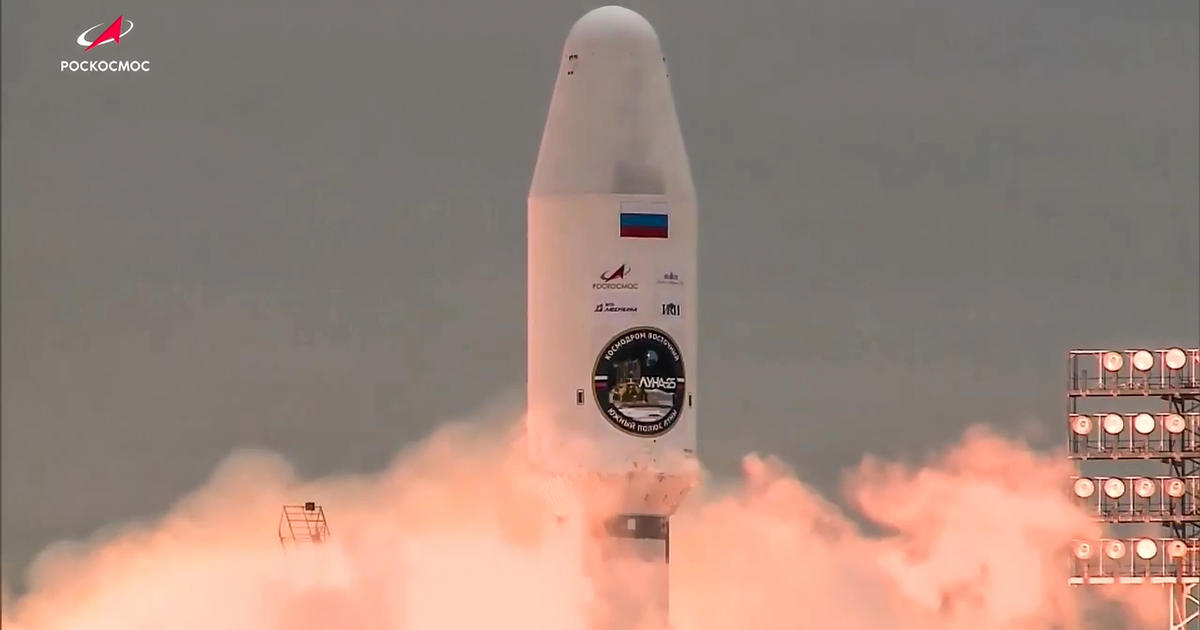A rocket carrying a lunar landing craft successfully lifted off from Russia’s Vostochny spaceport on Friday, marking Russia’s first moon mission in nearly five decades. The mission, named Luna-25, aims to reach Earth’s satellite before an Indian spacecraft. The last Russian moon mission occurred in 1976 during the time of the Soviet Union. The Russian lunar lander is projected to reach the moon on August 23, coinciding with the Indian craft’s arrival. The spacecraft will take approximately 5.5 days to reach the moon’s vicinity and then spend three to seven days orbiting at an altitude of about 100 kilometers (62 miles) before descending to the lunar surface.
With only three countries – the Soviet Union, United States, and China – having successfully executed moon landings, both India and Russia are striving to be the first to land on the moon’s south pole. This mission holds significant political implications, as it represents a competition between superpowers and countries vying for the title of space superpower.
Roscosmos, Russia’s space agency, stated that this mission aims to demonstrate Russia’s capability to deliver payloads to the moon and secure guaranteed access to its surface. However, due to sanctions imposed on Russia following its invasion of Ukraine, the country faces challenges in accessing Western technology, which impacts its space program. As a result, the initial plan to send a small moon rover with Luna-25 was scrapped to reduce the craft’s weight and enhance reliability.
The launch took place at the Vostochny Cosmodrome in Russia’s Far East, a significant project supported by Russian President Vladimir Putin to establish Russia as a space superpower and shift Russian launches from the Baikonur Cosmodrome in Kazakhstan.
Exploration of the lunar south pole is of great interest to scientists due to the presence of permanently shadowed polar craters that may contain water. The icy water within these craters could be utilized as a valuable resource for future space missions, serving as air and rocket fuel.
The Luna-25 mission will collect samples of moon rock and dust, which are crucial for understanding the lunar environment before establishing any future bases. By studying these samples, scientists can better assess the challenges and potential risks associated with constructing and maintaining structures on the moon’s surface.
The moon, being an untouched celestial body, holds vast scientific significance. Its surface tells the story of its history, making it a unique laboratory for researchers. Understanding the moon’s composition and environment is essential for future space exploration endeavors.
In conclusion, the Luna-25 mission represents Russia’s reentry into lunar exploration after a long hiatus. It reflects both political competition between superpowers and the scientific quest for knowledge about the moon’s composition and potential resources. By successfully reaching the moon’s surface, Russia aims to showcase its capabilities and secure its place in the global space community.
Denial of responsibility! VigourTimes is an automatic aggregator of Global media. In each content, the hyperlink to the primary source is specified. All trademarks belong to their rightful owners, and all materials to their authors. For any complaint, please reach us at – [email protected]. We will take necessary action within 24 hours.


